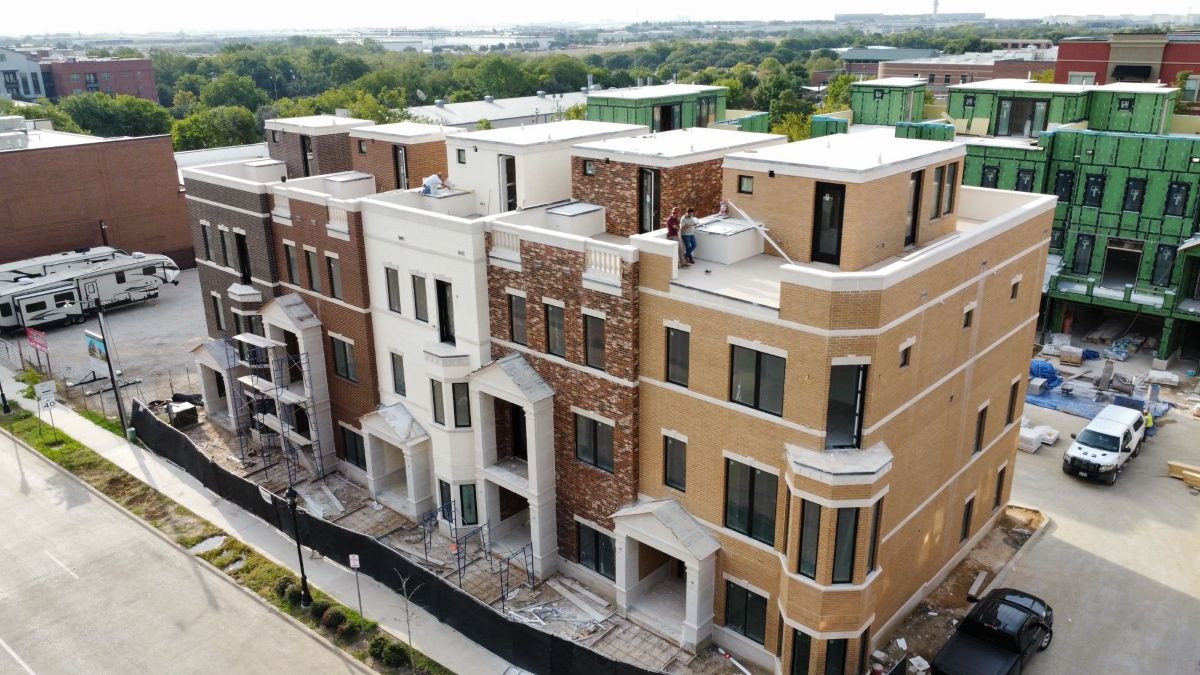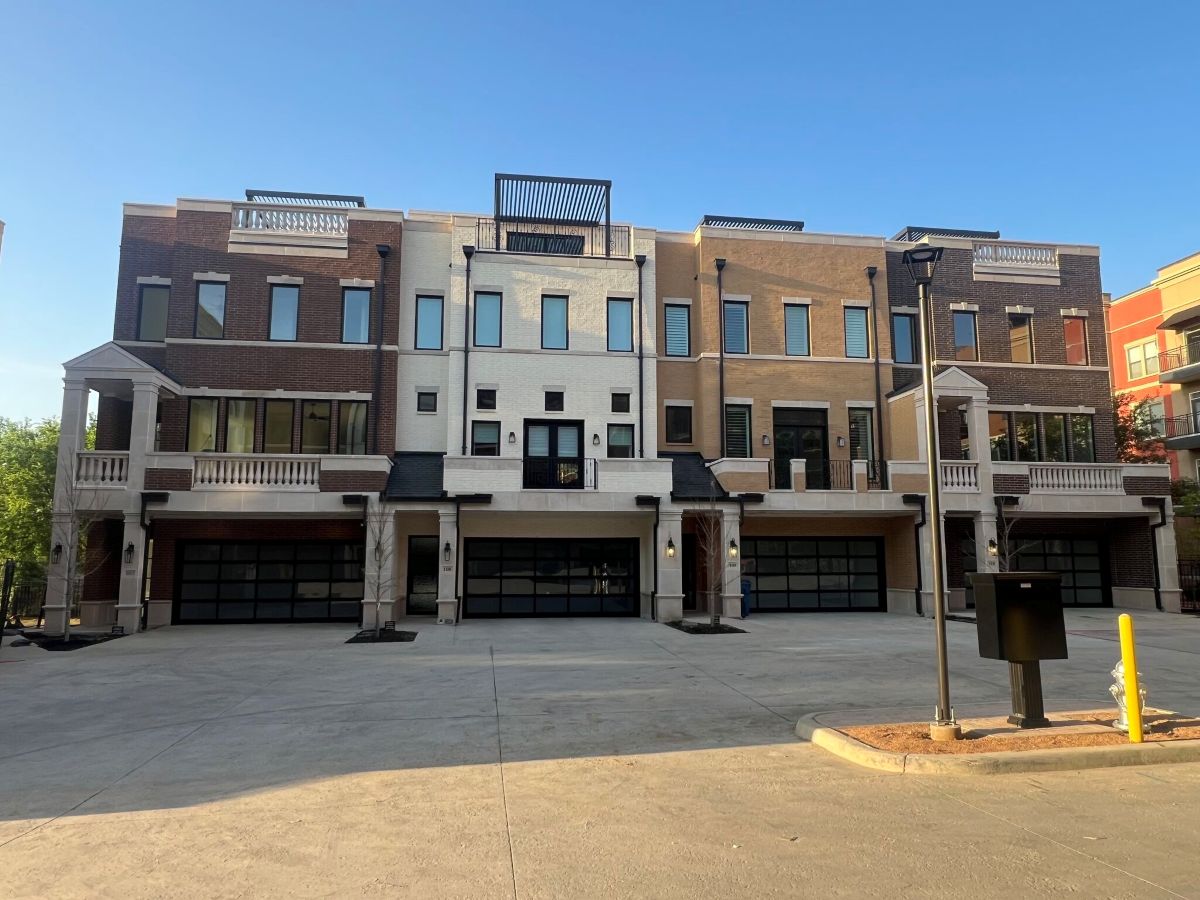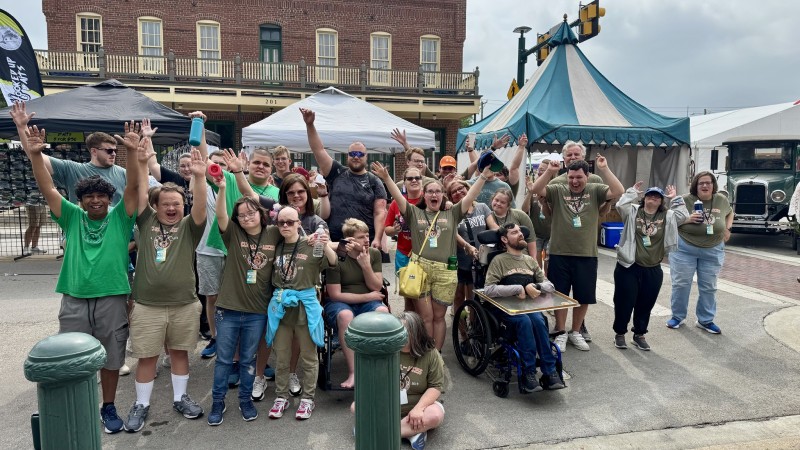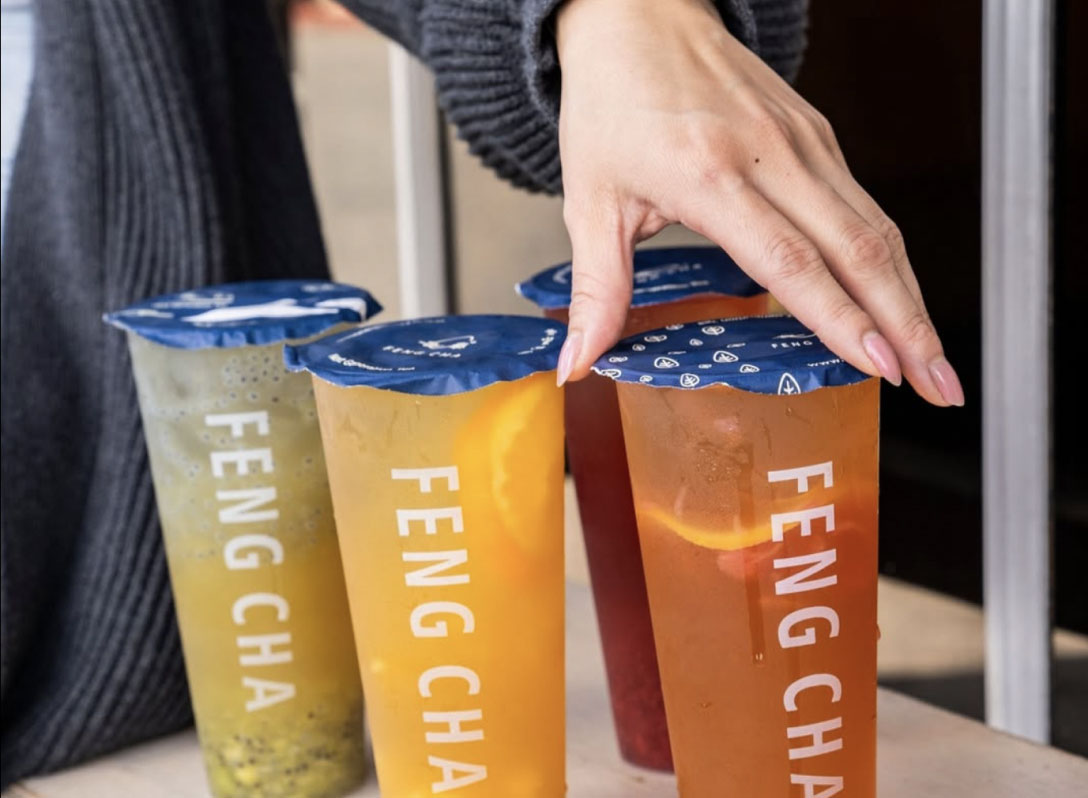The Grapevine Brownstones Contribute to the Culture of Main Street

7 Aug 2025
News
NuCiti Capital Partners is entering the final phase of a construction project that will bring 28 brownstone townhomes to Downtown Grapevine. The new residences are directly across from Hotel Vin and have immediate access to TEXRail’s Grapevine Station. This construction project supports the need for housing in the region while also shaping the future of downtown Main Street in the Transit District.
“The Transit District is an interesting dynamic in Grapevine,” says Gregg Gifford, Founder and Chairman of NuCiti Capital Partners. “When we set out to build the townhomes, our goal was to add residences to an area that would be desirable to the business owners operating there.”
Gifford saw that Main Street would benefit from higher-end residences. Most of the Grapevine Brownstones have either sold or are under contract, reflecting the demand for these types of properties in the downtown area.
The Grapevine Brownstones may have surprised some residents, but they are a natural fit in the area. Read why they are an asset to the community and learn about the care Gifford and his team took in designing them.
Preserving the Charm of the Historic District
The intentionality of design is noticeable to anyone who looks at the Grapevine Brownstones. No two buildings are alike, and the façades are designed to mimic the downtowns of urban areas like Brooklyn or Boston.
“When we started the project, streetscapes were important to the city and the community,” says Gifford. “They were an element of why the Transit District was created in the first place.”
The Transit District refers to the downtown area served by Trinity Metro. Residents can take the train to Dallas-Fort Worth International Airport (the third busiest airport in the world) or ride in the other direction to downtown Fort Worth.
The City of Grapevine has clear guidelines for what can be built in the Transit District and along Main Street. These guidelines protect the charm of the historic downtown area and ensure future development will align with this existing infrastructure in the city.
“It’s not inexpensive to deliver the elements that are in the architectural code of the Transit District,” says Gifford. “But anybody who builds along Dallas Road should adhere to the guidelines as we did and carry forward the same design themes.”
Gifford appreciates the city's long-term approach to Main Street development. He expects the Grapevine Brownstones to contribute to the neighborhood's growth while supporting the city’s vision.
“When we look back in 10 years, the Brownstones will be a nice development that contributed to what city leaders envisioned when they created the Transit District ordinances,” he says.

Creating Housing to Match Lifestyle Goals
Gifford and his team are “selling the Grapevine experience” with these townhomes. They understand that people move to Main Street because they want a city living experience. They want to enjoy new restaurants, participate in neighborhood events, and explore their community without driving from one place to the next.
“Main Street itself is the attraction that starts it all,” says Gifford. “And the business owners across Main Street will appreciate the socioeconomic impact from the wallets of people who live in the Grapevine Brownstones.”
Along with attracting buyers with the location, NuCiti Capital Partners designed the townhomes to accommodate different lifestyle needs. Buyers have five different floor plans to choose from, and each unit is elevator-ready for convenience and accessibility. All ten units from Phase One came with lifts installed, and the remaining homes are framed around an elevator shaft, giving buyers freedom to select their preferred style or skip installation altogether.
“Main Street is one of the top destinations for Grapevine residents when they want to relax after work or on the weekend,” says Garin Giacomarro, Director of Grapevine Economic Development. “The Grapevine Brownstones will allow buyers to access historic downtown amenities right from their doorsteps.”
Keeping Up With Population Growth
The Dallas-Fort Worth metro area is the third-fastest growing in the country, which means housing is at a premium. Developers need to invest in several forms of housing, ranging from affordable to luxury units. Accounting for different types of buyers can reduce the pressure to find homes in the region.
“Development is part of the natural evolution of a town,” says Gifford. “Grapevine can’t help that it is the closest historic Main Street to DFW airport. So how do we embrace it as a town? We either have to evolve or stay in the past.”
City leaders believe it’s possible to do both: preserving the historic charm of the area while providing modern amenities. Intentional development allows Grapevine to preserve its historic district, keeping it a desirable attraction for residents while also addressing housing needs. This is part of the natural push-pull of economic development, with city leaders taking a big-picture view of the community. Creating housing now will address immediate needs, but can also shape the future of Grapevine for decades to come.
Learn More About Grapevine’s Historic District
Discover why more people than ever are choosing to move to Grapevine. Read about the rail development in the historic district, or listen to this story on the Growing Grapevine podcast. Site selectors and investors can explore the business advantages and incentives to move to Grapevine. The ample location advantages make Grapevine the top choice for new business expansion and residential families alike.
More Topics








